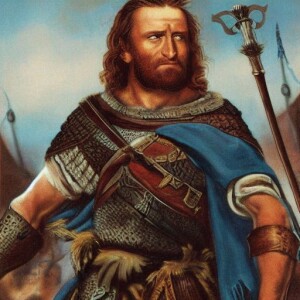In the annals of Scottish history, one name stands out like a beacon of hope and defiance: William Wallace. Born in the tumultuous era of the late 13th century, Wallace would rise to become a legendary figure, forever etched in the memories of his countrymen.
With a spirit untamed by English oppression, Wallace emerged as a fierce leader, embodying the indomitable Scottish resistance. His presence alone struck fear into the hearts of his enemies. Renowned for his military genius and tactical brilliance, he orchestrated a series of triumphant campaigns against the English forces.
But it was at the Battle of Stirling Bridge where Wallace’s legend reached its zenith. With the odds stacked against them, the Scottish army, led by this fearless warrior, defied all expectations and achieved an astonishing victory. The reverberations of this momentous event echoed throughout the land, igniting a fire of nationalistic fervor that burned brighter than ever before.
Alas, the tides of fortune can be fickle, and Wallace’s glory was short-lived. The Battle of Falkirk dealt a crushing blow to his aspirations, leading to his capture and subsequent execution in 1305. Yet, even in death, his spirit refused to be extinguished.
The tale of William Wallace, the valiant knight who dared to challenge the might of a kingdom, captured the hearts and minds of generations. His legacy became an indelible symbol of Scottish resilience and the fight for independence. From the epic verses of Blind Harry’s “The Wallace” to the silver screen portrayal in the iconic film “Braveheart,” his story has resonated across time.
William Wallace, the embodiment of unwavering commitment and heroic deeds, continues to inspire and captivate. His name lives on, forever etched in the annals of Scottish history, as an enduring symbol of bravery, freedom, and the undying spirit of a nation.

